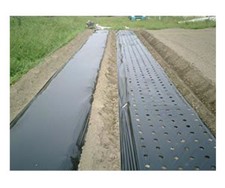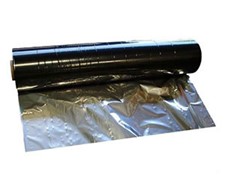Integration between SAP Commerce and Customer Data Cloud
- pragati
- October 27, 2021
- Software development
- 0 Comments
Also developers might want to deploy it to a server for various benefits. However, many of these models for transaction management are costly and challenging to implement. Building and maintaining a platform that manages distributed transactions well requires immense skill from developers and operators. Including an external transaction manager in the system design to support XA-transactions that span over multiple systems.
Gartner research publications consist of the opinions of Gartner’s research organization and should not be construed as statements of fact. Gartner disclaims all warranties, expressed or implied, with respect to this research, including any warranties of merchantability or fitness for a particular purpose. After a configurable amount of time (e.g. 60min for standard delivery orders, 15min for express orders), the Commerce order is replicated via CPI to the SAP back end as ORDERS idoc. Included in the order document is the list of products , the promotion prices and basket value determined by OPPS, the source per line item determined by OAA, the payment token provided by the payment provider.
Integration Object (IO) Setup
The OpenTelemetry Protocol specification describes the encoding, transport, and delivery mechanism of telemetry data. A receiver, which can be push or pull based, is how data gets into the Collector. Metrics are aggregations over a period of time of numeric data . This API implements the Open Telemetry protocol to read and inject raw data managed by SAP Cloud ALM with the Open Telemetry protocol. The SAP Cloud ALM raw data API implements the OpenTelemetry protocol to provide access to the observability signals produced by SAP Cloud ALM.

Sharing the underlying integrated transaction manager in a relational database system between these capabilities ensures consistency between transactions . Integrating inbound and outbound communications in the scope of the SAP Commerce Cloud and SAP S/4HANA Cloud integration requires SAP commerce cloud knowledge of important practices. Also, take the time to visit my colleague Rodrigo Cardoso‘s profile to find out more information about the SAP Commerce and SAP Emarsys integration. Through the SAP CPI Monitor Messaging Processing app, you can check the processed messages.
Spartacus Version Compatibility Issues
SAP Commerce Cloud also simplifies complex commerce and order processes, so you can engage customers more effectively and connect the demand with your supply chain. Showing recent items.Search or use up and down arrow keys to select an item. Still supported for the SAP Retail integration with Commerce 2005 on prem – IPR planned in October – however a switch from Commerce datahub to SAP CPI is recommended for future compatibility. The IPR integration package is free of charge for SAP Commerce on-prem customers (with a Commerce license – a PCM license is not enough). The supported SAP Commerce release is mentioned on the right hand side of the Integration extension Pack page in SAP Help.
Commerce Cloud calls the connected payment provider to authorize the payment. The authorization token is added to the Commerce order, which waits to be confirmed by the customer. Promotion prices for products and the shopping basket are provided by the SAP Omnichannel Promotion Pricing web service . Let’s start with the reference architecture and then look for former releases and release combinations.
Raw Data API
The SAP Commerce Cloud is an e-commerce solution that empowers you to scale your ecommerce business and drive huge profits. It is built to fulfill the needs of B2B, B2C, and B2B2B business models. It is easy to personalize the platform to accomplish all the requirements and manage complicated catalogs and configurations. Vesa, I do like this article, provides a comprehensive picture for microservices-based architecture.
- The SAP Cloud ALM raw data API implements the OpenTelemetry protocol to provide access to the observability signals produced by SAP Cloud ALM.
- Traces, records the paths taken by requests (made by an application or end-user) as they propagate through multi-service architectures.
- More importantly, eCommerce brands can accelerate conversions by offering better personalisation experiences based on customer data collected.
- Everything within the Hybris accelerator is linked by product SKU.
- The user will create product media and upload this to Amplience, usually via FTP using a batch process.
- The search engine of SAP Commerce Cloud provides the search results enriched with OPP promotion prices and base sale prices , as well as OAA aggregated stock and rough stock indicators .
- This property has to be explicitly set as false for all higher environments like Dev, Stg and Production for the hot folder imports to work as before.
Learners will also identify the constituent steps required within each integrated business process. Watch the video below for an overview of the Amplience SAP Commerce Cloud extension. The Dynamic Media set API is then used to retrieve product information, from a website or app, or the Hybris Product Cockpit. The following diagram shows an overview of the various components of the integration. The extension is an integration accelerator that simplifies the implementation of Amplience Dynamic Media.
SAP Commerce Cloud Business User Training
The user will create product media and upload this to Amplience, usually via FTP using a batch process. Once the media sets are created, they are published to the Amplience Content Delivery Network . The question now is which capabilities could and should be implemented with it. SAP Commerce Cloud began its continuous innovation journey with its 2211 release on November 18, 2022. With this, SAP started to provide monthly update releases of SAP Commerce Cloud 2211 instead of the earlier monthly patches. As the releases prior to 2211 fast approach their End Of Mainstream Maintenance period, it becomes imperative for customers currently using the prior commerce versions to upgrade their ecommerce sites to 2211.x versions.

While the samlsinglesignon extension still exposes the legacy endpoints, to use the default endpoints shipped with the spring-security-saml2-service-provider library, the sso.legacy.endpoints.enabled property needs to be set to false. As a result of replacing Spring Security SAML with Spring Security, the OpenSAML library has been upgraded to 4.4.1 and quite many libraries have been removed or modified. The Saml2AuthenticatedPrincipal interface has been replaced with SAMLCredential.
High level architectureLink copied!
As of SAP Commerce Cloud release v2011, OAuth2 authentication is now supported for exposed Integration APIs. This article will cover how to update an existing Integration Object to support OAuth2 authentication and then expose the API and (re-)register it with your SAP BTP Kyma Runtime Destination Target. This solution allows us to view and manage customer orders from start to finish, streamlining order fulfillment, and improving the shopping experience. SAP Commerce Cloud Order Management gives the customers a range of buying, collection and returning options while completing orders quickly and efficiently.
Next we create a ExposedDestinationwhich specifies the destination target Default Template.This configuration will include this API as an `ExposedDestination` when you register a Destination Target. An exporter, which can be push or pull based, is how data are sent to one or more backends/destinations. https://www.globalcloudteam.com/ Logs are timestamped text records, emitted by services or other components, either structured or unstructured, with metadata. For example, there are many parts composing products, orders, and customers that the Integration Objects encapsulate into a cohesive unit of work.
Expose Your API – Existing Destination Target
It is called through the process direct adapter and expects to receive the message header SecureMaterial, which contains the SAP CPI security material ID used to generate the HTTP Header. Then the data is sent to a JMS queue, making the replication process asynchronous, as explained on Mandy Crimmel’s blog. This blog post is part of a series of blogs demonstrating how to feed data on the SAP Emarsys from SAP Commerce. I will bring in future posts SAP Commerce integrations directly with Emarsys. This work was done with my buddyDavid Pietroniroto explore SAP Commerce’s OOTB features for integration. Integrating SAP Commerce and SAP Emarsys using Cloud Integration post by David Pietroniro.In Emarsys, we are going to check the information sent from CPI.




